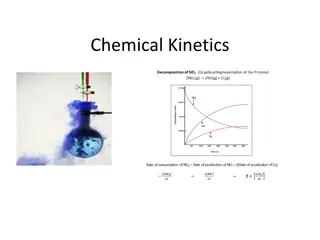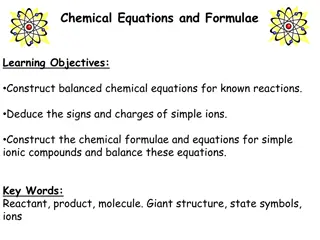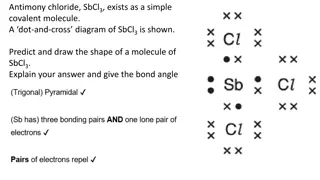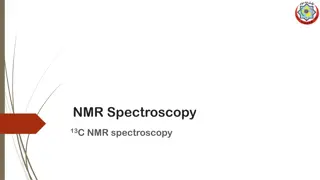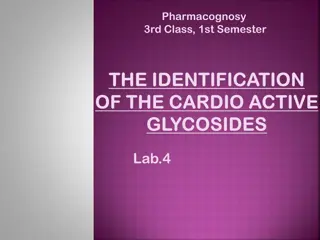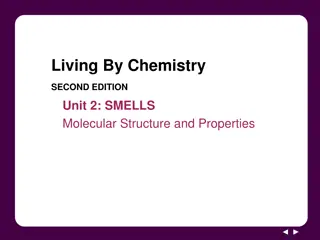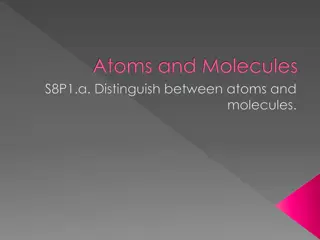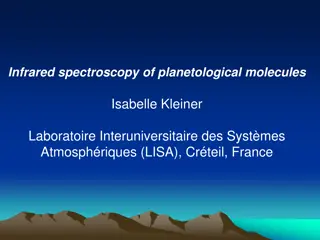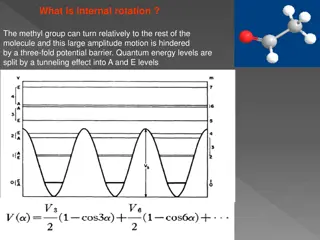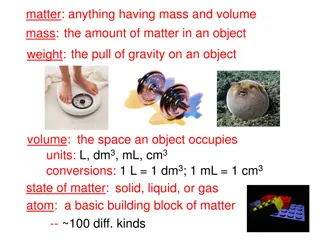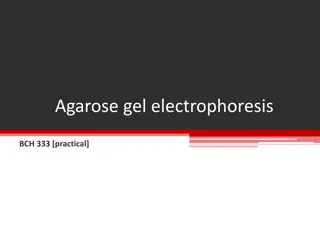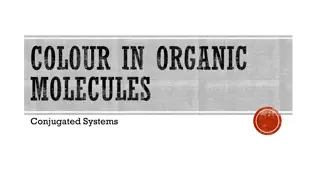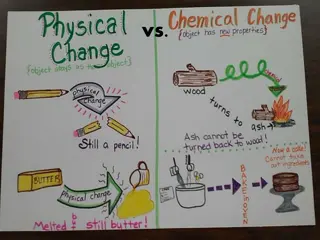Understanding Molecules and Chemical Formulae
Explore the world of molecules and molecular formulae, starting from the basic structure of atoms to bonding and predicting chemical formulae. Learn about valency, how atoms bond to form molecules, and how to predict chemical formulas for different elements. Discover the significance of electron configuration and the role of valency in determining bonding patterns. Dive into the realm of chemistry and unlock the secrets of molecular compositions.
Download Presentation

Please find below an Image/Link to download the presentation.
The content on the website is provided AS IS for your information and personal use only. It may not be sold, licensed, or shared on other websites without obtaining consent from the author. Download presentation by click this link. If you encounter any issues during the download, it is possible that the publisher has removed the file from their server.
E N D
Presentation Transcript
Molecules and Molecular Formulae
What we already know Atoms are made up of three different subatomic particles. Particle Location Charge Proton In the nucleus +1 Neutron In the nucleus 0 Electron Orbiting the nucleus -1 Electrons stay in orbits (shells) around the nucleus. There can be, at most, 2 electrons in the first shell. There can be, at most, 8 electrons in any other shells. But only if the previous shells are filled.
Bohr Diagrams - Model of an atom Notice that the outer shells only have electrons when the inner shells are full.
Bonding Bonding is the name given to how atoms stick together. Atoms will bond in different ways, depending on how many electrons they have in their outermost shell. All atoms would like to create a bond that gives them a full outer shell of electrons. Noble gases (Group 8/0) are very unreactive because they already have a full outer shell and don t need to bond with any other atoms.
Bonding When atoms bond together they form a molecule. If atoms from the same element bond together, e.g. two oxygen atoms. We get an elemental molecule, O2 If atoms from different elements bond together, e.g. hydrogen and oxygen. We get a compound molecule, H2O
Predicting Chemical Formulae We need to be able to predict how many of each atom will be involved in bonding. Why is there two H s and one O in water? We need to learn about valency Valency is the maximum number of electrons an atom of an element will give, take or share with any other atom.
Predicting Chemical Formulae Valency depends on the group (column) in the periodic table that an element is in.
Predicting Chemical Formulae Now that we know what valency is and how to find it for each element we can predict chemical formula of any pair of atoms from any elements that are not part of the transition metals. We will use the following technique to help us. H C Mg Cl H O Mg O Valency Valency 1 4 2 1 Valency 1 2 Valency 2 2 Switch Numbers Switch Numbers Switch Numbers Switch Numbers H2O MgCl2 H4C MgO Just like in Maths , if there is a 1 beside the element, we don t bother writing it. If you can simplify the numbers, you should, i.e. Mg2O2becomes MgO H4C is methane and is usually written as CH4
Exam Style Questions Using the Periodic Table of the Elements, draw diagrams, similar to above of the interlocking plastic bricks, to model 2 compounds of your choosing. Include the name and the formula for each compound.
Exam Style Questions Complete the table below, using the Periodic Table of the elements to predict the ratio of atoms and the chemical formula for each of the compounds listed. Compound First Element Second Element Ratio Formula Water Hydrogen (H) Oxygen (O) 2:1 H2O Magnesium chloride Magnesium (Mg) Chlorine (Cl) : Ammonia Nitrogen (N) Hydrogen (H) :
Exam Style Questions Aluminium reacts with chlorine to form the compound aluminium chloride. Use the Periodic Table of the Elements to predict the ratio of aluminium to chlorine in this compound. Hence write the chemical formula for aluminium chloride.




